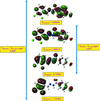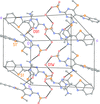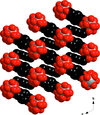issue contents
March 2019 issue

Cover illustration: The analysis of atom-to-atom and/or residue-to-residue contacts remains a favoured mode of analysing the molecular packing in crystals. This contribution highlights tools for this analysis such as Crystal Explorer and NCIPLOT, which is used to evaluate the nature, i.e. attractive/weakly attractive/repulsive, of specific contacts. This is complemented by a discussion of the calculation of energy frameworks utilizing the latest version of Crystal Explorer. These programs are free of charge and straightforward to use. They complement each other to give a more complete picture of how molecules assemble in molecular crystals. See: Tan, Jotani & Tiekink [Acta Cryst. (2019). E75, 308-318].
research communications














































 journal menu
journal menu









































